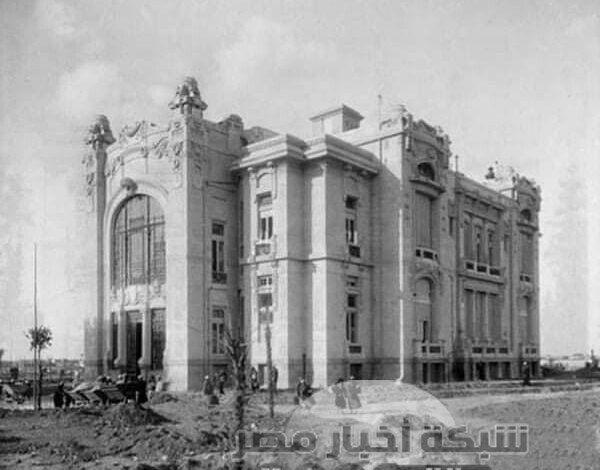قصر الزعفران..

محمود عبد الفتاح
الشرقيه
تحفة معمارية شاهدة على زمانها..
يقع قصر الزعفران بحي العباسية في القاهرة، ويرجع تاريخ إنشاءه إلى العام 1870 وتحديدا في عصر الخديوي إسماعيل الذي تقول المراجع التاريخية إنه أتم بناءه على أنقاض “قصر الحصوة” الذي بناه محمد علي، ويشير خبراء في آثار أسرة محمد علي إلى أن إسماعيل عهد إلى مهندس يدعى “مغربي بك سعد” بتصميم هذا القصر على الطراز القوطي وطراز الباروك، وأنه اشترط عليه أن يبني القصر على غرار قصر فرساي في فرنسا، ويطل قصر الزعفران على حي العباسية من أربع واجهات معشقة بنوافذ وشرفات بعقود نصف دائرية، وزخارف جصية بهيئة فروع نباتية وأكاليل زهور غاية في البساطة والرقة، وقد تضمن تصميم القصر فنون النحاس والذهب والزجاج الملون، فضلا عن أسقفه الملونة بألوان السماء، وكان الخديوي إسماعيل قد طلب نقش الأحرف الأولى من اسمه وشكل تاجه الخاص على بوابة القصر الحديدية ومداخل القاعات والغرف، وفي عام 1872 أهدى القصر لوالدته المريضة خوشيار هانم، ويتبع القصر الآن جامعة عين شمس، وقد انتقلت إليه إدارة الجامعة منذ سنوات بعيدة، لكنه لا يزال يحتفظ بطرازه المعماري الذي يتميز بالبساطة في العناصر المعمارية والزخرفية..
An architectural masterpiece that bears witness to its time…
Saffron Palace..
The Saffron Palace is located in the Abbasid neighborhood in Cairo. Its construction dates back to the year 1870, specifically in the era of Khedive Ismail, who historical references say had completed its construction on the ruins of the “Haswa Palace” built by Muhammad Ali, and experts in the antiquities of the Muhammad Ali family indicate that Ismail entrusted to an engineer He called “Maghribi Bey Saad” by designing this palace in the Gothic and Baroque style, and that he stipulated that he build the palace similar to the Palace of Versailles in France. The Saffron Palace overlooks the Abbasid neighborhood from four facades intertwined with windows and balconies with semicircular arches, and stucco decorations in the form of floral branches and wreaths Flowers are very simple and delicate, and the palace’s design included the arts of copper, gold and stained glass, as well as its ceilings colored in the colors of the sky, and Khedive Ismail had asked to engrave his initials and the shape of his own crown on the iron palace gate and the entrances to the halls and rooms, and in 1872 he gave the palace to his mother The patient Khoshyar Hanim, and the palace now belongs to Ain Shams University, and the university administration moved to it many years ago, but it still maintains its architectural style, which is characterized by simplicity in the architectural and decorative elements… 



















